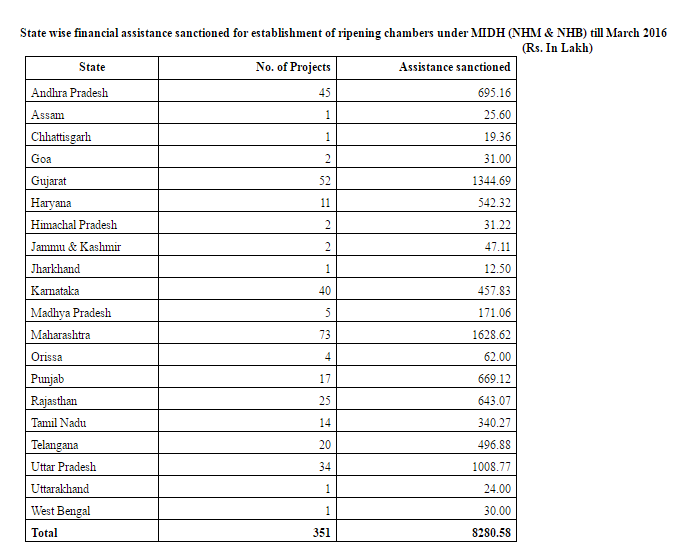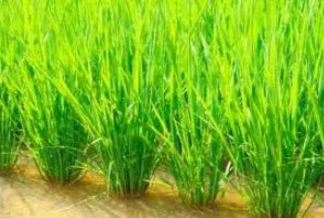New Delhi, July 19, 2016: India is moving ahead to ensure that farmers get the best in agriculture.
National Agricultural Research System comprising ICAR, central agricultural universities and SAUs are taking adequate steps continuously for developing eco-friendly flood tolerant seeds for protecting the crops in flood prone regions of the various States of the country. And the good news for India is that the concerted research efforts led to rthe elease of 49 different crop varieties tolerant to flood/water logging stresses comprising 22 of rice, 4 of maize, 10 of sugarcane, 10 of jute and 3 of soybean.
During 2013-14, 2014-15, 2015-16 and kharif 2016, 30.2 lakh ton, 30.4 lakh ton, 31.6 lakh ton and 12.0 lakh ton, respectively, of certified/quality seeds of improved varieties of different crops tolerant to flood/drought were made available to the farmers.
The Government of India has launched several central sector crop development schemes viz. National Food Security Mission (NFSM), Bringing Green Revolution in Eastern India (BGREI), National Mission on Oil Seeds and Oil Palm (NMOOP), Rashtriya Krishi Vikas Yojana (RKVY), Sub-mission on Seeds & Planting Material under National Mission on Agricultural Extension & Technology and these schemes are under operation in all the states including flood prone states as well.
This information was given by the Minister of State for Agriculture, Sudarshan Bhagat in Lok Sabha today.
He further informed, that the Department of Agriculture, Cooperation and Farmers Welfare (DAC&FW) is implementing Mission for Integrated Development of Horticulture (MIDH) for holistic development of horticulture in India including the creation of post harvest management infrastructure to reduce losses of perishable horticulture produce. Post harvest management component includes establishment of setting up of pack house, pre-cooling, primary processing, cold chain, refrigerated transport, ripening chambers etc.
These components are demand & entrepreneur driven for which credit linked back ended subsidy is available through respective State Horticulture Missions. An entrepreneur can avail assistance for establishment of ripening chamber @ 35% of admissible project cost in general areas and @ 50% in hilly and schedule area as credit linked and back ended subsidy. The admissible cost for ripening chamber is Rs. 1.00 lakh per MT limited to maximum of 300 MT capacity. State wise assistance sanctioned under MIDH for establishment of ripening chambers is given below in table.

Capacity building of field staff and farmers is one of the major components of MIDH. State Horticulture Missions are organizing regular training programmes and workshops on Post-harvest Management (PHM) including ripening chambers for the benefit of farmers and entrepreneurs. Further, National Centre for Cold-chain Development (NCCD), an autonomous organization under Department of Agriculture, Cooperation & Farmers Welfare is holding workshops and training programmes in various parts of the country for ripening chamber operators and farmers for awareness and technical information for establishment and running of ripening chambers.
The minister also informed that after wide ranging consultation and elaborate discussion with different stakeholders such as National Disaster Management Authority, National Disaster Response Force, National Institute of Disaster Management, various State Governments and knowledge Institutions, the Department of Animal Husbandry, Dairying & Fisheries has prepared and launched Disaster Management Plan (DMP) for protecting animals and preventing and mitigating loss of livestock resources during various disasters.
DMP is divided into three parts a) Pre-disaster preparedness, b) Disaster response and c) Post-Disaster Plan. Pre-disaster preparedness includes detailed action plan relating to dissemination of early warning, identification of vulnerability amongst livestock, animal vaccination, feed and fodder supply and capacity building of different stake-holders in disaster management etc in India.
Disaster response component includes strategy/action plan relating to effective and prompt response, rescue of livestock, feed & fodder supply, measures against epidemics and diseases and maintenance of Sanitation etc. Post disaster component include strategy for treatment of sick animals, disease surveillance, disposal of carcass, restoration and restocking of livestock population.
DMP aims to supplement the efforts of States/UTs in managing disasters and lays down the broad guidelines for management of animal during disasters like drought, floods, cyclones, earthquakes and other man-made disasters etc. in the states/UTs.

